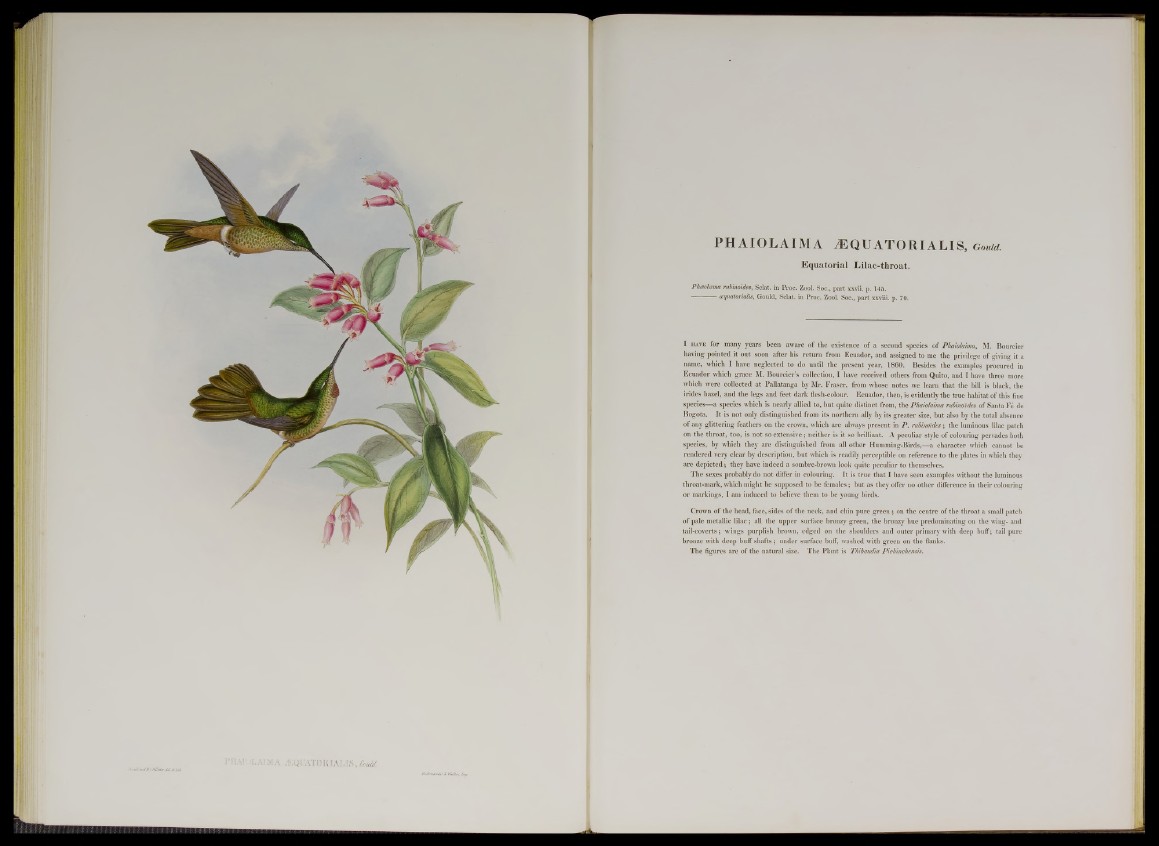
PHAIOLAIMA ^QUATORIALI S , Gould.
Equatorial Lilac-throat.
PJueolama rubinoides, Sclat. in Proc. Zool. Soc., part xxvii. p. 145.
----------- aquatonalis, Gould, Sclat. in Proc. Zool. Soc., part xxviii. p. 70.
I h a v e for many years been aware of the existence of a second species of Phaiolaima, M. Bourcier
having pointed it out soon after his return from Ecuador, and assigned to me the privilege of giving it a
name, which I have neglected to do until the present year, 1860. Besides the examples procured in
Ecuador which grace M. Bourcier’s collection, I have received others from Quito, and I have three more
which were collected at Pallatanga by Mr. Fraser, from whose notes we learn that the bill is black, the
irides hazel, and the legs and feet dark flesh-colour. Ecuador, then, is evidently the true habitat of this flue
species—a species which is nearly allied to, but quite distinct from, the Phaiolaima rubinoides of Santa Fe de
Bogota. It is not only distinguished from its northern ally by its greater size, but also by the total absence
of any glittering feathers on the crown, which are always present in P . rubinoides; the luminous lilac patch
on the throat, too, is not so extensive; neither is it so brilliant. A peculiar style of colouring pervades both
species, by which they are distinguished from all other Humming-Birds,—a character which cannot be
rendered very clear by description, but which is readily perceptible on reference to the plates in which they
are depicted; they have indeed a sombre-brown look quite peculiar to themselves.
The sexes probably do not differ in colouring. It is true that I have seen examples without the luminous
throat-mark, which might be supposed to be females; but as they offer no other difference in their colouring
or markings, I am induced to believe them to be young birds.
Crown of the head, face, sides of the neck, and chin pure green; on the centre of the throat a small patch
of pale metallic lilac; all the upper surface bronzy green, the bronzy hue predominating on the wing- and
tail-coverts; wings purplish brown, edged on the shoulders and outer primary with deep buff"; tail pure
bronze with deep buff shafts; under surface buff, washed with green on the flanks.
The figures are of the natural size. The Plant is Thibaudia Pichinchensis.